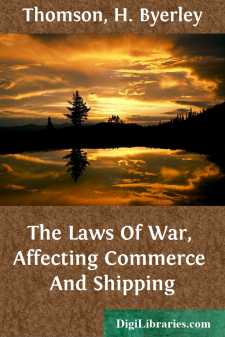Categories
- Antiques & Collectibles 13
- Architecture 36
- Art 48
- Bibles 22
- Biography & Autobiography 813
- Body, Mind & Spirit 142
- Business & Economics 28
- Children's Books 17
- Children's Fiction 14
- Computers 4
- Cooking 94
- Crafts & Hobbies 4
- Drama 346
- Education 46
- Family & Relationships 57
- Fiction 11829
- Games 19
- Gardening 17
- Health & Fitness 34
- History 1377
- House & Home 1
- Humor 147
- Juvenile Fiction 1873
- Juvenile Nonfiction 202
- Language Arts & Disciplines 88
- Law 16
- Literary Collections 686
- Literary Criticism 179
- Mathematics 13
- Medical 41
- Music 40
- Nature 179
- Non-Classifiable 1768
- Performing Arts 7
- Periodicals 1453
- Philosophy 64
- Photography 2
- Poetry 896
- Political Science 203
- Psychology 42
- Reference 154
- Religion 513
- Science 126
- Self-Help 84
- Social Science 81
- Sports & Recreation 34
- Study Aids 3
- Technology & Engineering 59
- Transportation 23
- Travel 463
- True Crime 29
Manual of Military Training Second, Revised Edition
Categories:
Description:
Excerpt
PREFATORY
Not only does this manual cover all the subjects prescribed by War Department orders for the Junior Division, and the Basic Course, Senior Division, of the Reserve Officers' Training Corps, but it also contains considerable additional material which broadens its scope, rounding it out and making it answer the purpose of a general, all-around book, complete in itself, for training and instruction in the fundamentals of the art of war.
The Company is the basic fighting tactical unit—it is the foundation rock upon which an army is built—and the fighting efficiency of a COMPANY is based on systematic and thorough training.
This manual is a presentation of MILITARY TRAINING as manifested in the training and instruction of a COMPANY. The book contains all the essentials pertaining to the training and instruction of COMPANY officers, noncommissioned officers and privates, and the officer who masters its contents and who makes his COMPANY proficient in the subjects embodied herein, will be in every way qualified, without the assistance of a single other book, to command with credit and satisfaction, in peace and in war, a COMPANY that will be an efficient fighting weapon.
This manual, as indicated below, is divided into a Prelude and nine Parts, subjects of a similar or correlative nature being thus grouped together.
The Object and Advantages of Military Training.Drills, Exercises, Ceremonies, and Inspections.Company Command.Miscellaneous Subjects Pertaining to Company Training and Instruction.Rifle Training and Instruction.Health and Kindred Subjects.Military Courtesy and Kindred Subjects.Guard Duty.Military Organization.Map Reading and Sketching.A schedule of training and instruction covering a given period and suitable to the local conditions that obtain in any given school or command, can be readily arranged by looking over the TABLE OF CONTENTS, and selecting therefrom such subjects as it is desired to use, the number and kind, and the time to be devoted to each, depending upon the time available, and climatic and other conditions.
It is suggested that, for the sake of variety, in drawing up a program of instruction and training, when practicable a part of each day or a part of each drill time, be devoted to theoretical work and a part to practical work, theoretical work, when possible, being followed by corresponding practical work, the practice (the doing of a thing) thus putting a clincher, as it were, on the theory (the explaining of a thing). The theoretical work, for example, could be carried on in the forenoon and the practical work in the afternoon, or the theoretical work could be carried on from, say, 8 to 9:30 a. m., and the practical work from 9:30 to 10:30 or 11 a. m.
Attention is invited to the completeness of the Index, whereby one is enabled to locate at once any point covered in the book.
The author wishes to acknowledge the assistance received in the revision of this Manual in the form of suggestions from a large number of officers on duty at our military schools and colleges, suggestions that enabled him not only to improve the Manual in subject-matter as well as in arrangement, but that have also enabled him to give our military schools and colleges a textbook which, in a way, may be said to represent the consensus of opinion of our Professors of Military Science and Tactics as to what such a book should embody in both subject-matter and arrangement.
Suggestions received from a number of Professors of Military Science and Tactics show conclusively that local conditions as to average age and aptitude of students, interest taken in military training by the student body, support given by the school authorities, etc., are so different in different schools that it would be impossible to write a book for general use that would, in amount of material, arrangement and otherwise, just exactly fit, in toto, the conditions, and meet the requirements of each particular school.
Therefore, the only practical, satisfactory solution of the problem is to produce a book that meets all the requirements of the strictly military schools, where the conditions for military training and instruction are the most favorable, and the requirements the greatest, and then let other schools take only such parts of the book as are necessary to meet their own particular local needs and requirements.
"MANUAL OF MILITARY TRAINING" is such a book.
Camp Gaillard, C. Z.,
March 4, 1917.












